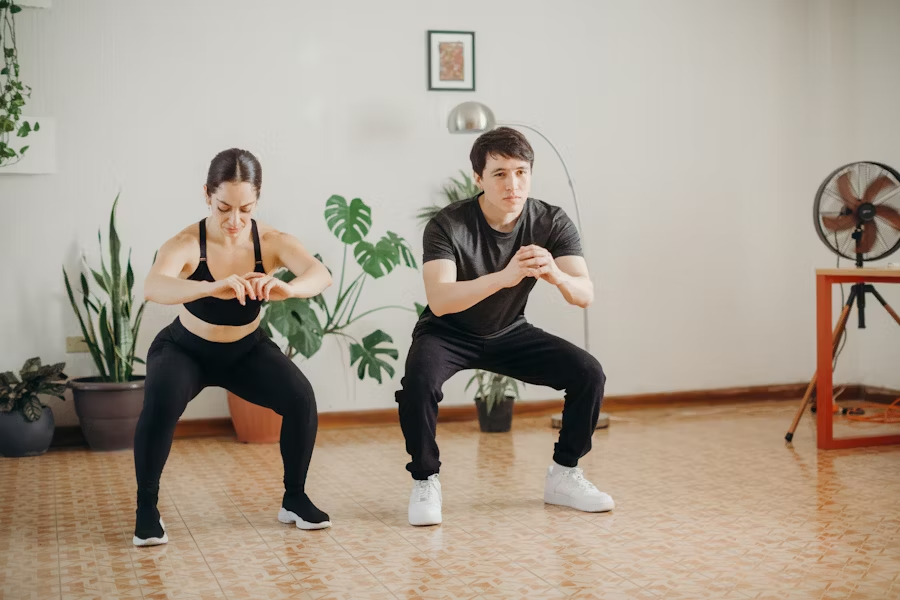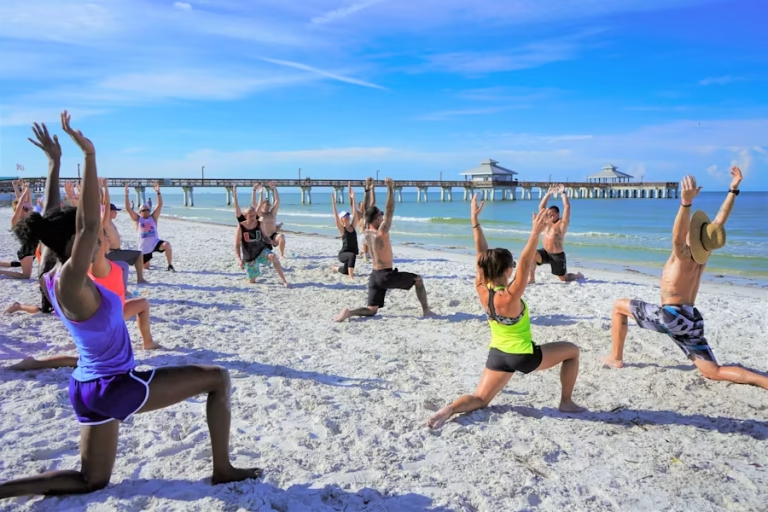Benefits of Squatting

For the first fifteen years of my career, I completely underestimated the power of squatting. I was so caught up in all the fancy equipment and complex training programs that I overlooked one of the most fundamental human movements. Then I met Elena, a 78-year-old woman from Greece who visited my gym while staying with her daughter.
This woman could drop into a perfect deep squat like it was nothing, hold it for several minutes while we chatted, then stand up without even using her hands for support. Meanwhile, I had clients half her age who needed assistance just to sit down on a toilet seat. That moment was a real wake-up call for me.
Elena told me that in her village, people squatted to rest, to work, to socialize – it was just part of daily life. “In America, you sit in chairs and wonder why your bodies hurt,” she said with a smile. She wasn’t wrong.
The Humbling Reality Check
That encounter sent me down a rabbit hole of research about squatting, and what I discovered was pretty embarrassing. https://www.rushwalter.com/natural-movement-strength-training-for-complete-beginners/ Here I was, a fitness professional, and I’d been ignoring one of the most beneficial exercises humans can do.
I started paying closer attention to how my clients moved, and the patterns were clear. The ones who could squat well had fewer back problems, better posture, and more overall mobility. The ones who struggled with squatting were dealing with all sorts of issues – tight hips, weak glutes, poor balance, you name it.
So I decided to make squatting a priority in my own routine and with my clients. The transformation was remarkable, but it didn’t happen overnight, and there were definitely some bumps along the way.
Why Most Adults Can’t Squat Properly
Here’s something that shocked me when I started really looking into this – the average American adult loses the ability to squat deeply somewhere between ages 5 and 10. We’re literally trained out of one of our most natural movement patterns by chairs, desks, and modern living.
I remember working with David, a 45-year-old office worker who couldn’t squat past 90 degrees without falling backward. His ankles were tighter than guitar strings, his hip flexors were shortened from years of sitting, and his glutes had basically forgotten how to function properly.
But here’s the thing that gave me hope – every single one of these issues was fixable. https://www.rushwalter.com/how-to-create-your-own-natural-movement-training-program/ The human body has an incredible ability to adapt and relearn, even movements we haven’t done in decades.
The Physical Benefits That Surprised Me
Knee Health Improvements
This one was huge for me personally. I’d always been told that deep squatting was bad for your knees, but the research shows exactly the opposite. When you squat properly, you’re actually strengthening all the muscles around your knee joint and improving the mobility that protects against injury.
I had a client named Susan who’d been dealing with knee pain for years. Her doctor had told her to avoid squatting at all costs. But when we started with very gentle, supported squats and gradually built up her range of motion, her knee pain actually decreased significantly.
The key was starting slow and building proper movement patterns. We used a chair for support initially, then gradually worked toward deeper positions as her strength and mobility improved.
Hip Mobility Breakthrough
This is where squatting really shines. Your hips are designed to move through a huge range of motion, but modern life locks them into shortened positions that create all sorts of problems.
Regular squatting opens up your hip flexors, strengthens your glutes, and improves the mobility between your pelvis and spine. I’ve seen people go from barely being able to touch their toes to moving with the grace of someone half their age, just by incorporating daily squatting practice.
Core Strength That Actually Transfers
Here’s something most people don’t realize – squatting is one of the best core exercises you can do. But unlike crunches or planks, squatting builds core strength that actually helps you in real-world situations.
When you squat, your entire core has to work together to keep your spine stable while your hips and knees move through their full range of motion. This creates functional core strength that helps with everything from lifting groceries to playing with grandkids.
The Bathroom Connection Nobody Talks About
Okay, this might be a little TMI, but it’s important. The deep squat position is actually the natural human position for elimination. Before toilets were invented, humans squatted to go to the bathroom, and this position is far more efficient and healthy than sitting.
I’ve had clients tell me that improving their squatting ability also improved their digestive health and eliminated problems they’d been dealing with for years. It makes sense when you think about it – we’re using our bodies the way they were designed to function.
Mental Health Benefits I Didn’t Expect
This was probably the biggest surprise for me. When people start squatting regularly, they often report improvements in mood, confidence, and overall mental well-being.
I think part of it is the sense of accomplishment that comes from regaining a movement you thought you’d lost forever. There’s something deeply satisfying about being able to drop into a comfortable squat and know that you’re moving the way humans are supposed to move.
But there’s also research suggesting that certain postures, including squatting, can actually influence your hormone levels and stress response. https://www.rushwalter.com/mind-muscle-connection-advanced-techniques-for-better-results/ People who squat regularly often report feeling more grounded and centered, which makes sense given the literal connection to the ground.
How I Learned to Squat Again
At age 31, I had to essentially relearn how to squat properly. It was humbling, but also incredibly rewarding. I started by holding onto a door frame and just sitting back into the deepest squat I could manage, which wasn’t very deep at first.
Every morning, I’d spend five minutes working on my squat mobility. Some days I’d just hold the bottom position, other days I’d practice rocking side to side or forward and back. Gradually, my range of motion improved and the position became more comfortable.
The breakthrough came about six weeks in when I realized I could sit in a squat for several minutes without discomfort. It felt like I’d regained a piece of my humanity that I didn’t even know I’d lost.
Common Mistakes I Made (And How to Avoid Them)
Trying to Go Too Deep Too Fast
My biggest mistake was thinking I could just force my way into a deep squat through willpower and determination. That’s not how it works. Your body needs time to adapt, and pushing too hard too fast just leads to injury or frustration.
Start with whatever range of motion you currently have, even if it’s just a few inches. Use support when you need it, and be patient with the process.
Ignoring Ankle Mobility
For months, I focused only on hip flexibility and completely ignored my ankles. But ankle mobility is crucial for proper squatting mechanics. If your ankles are tight, you’ll be very challenged be able to squat properly no matter how flexible your hips are.
Spend time working on ankle dorsiflexion by doing calf stretches against a wall or practicing gentle ankle circles throughout the day. Another great ankle exercise is writing the alphabet with each foot separately, one right after the other.
Forgetting About Foot Position
I used to think foot position didn’t matter much, but it makes a huge difference. Most people need their feet slightly wider than shoulder-width apart, with toes turned out about 30 degrees.
Play around with your foot position to find what feels most natural and stable for your body. Everyone’s anatomy is slightly different, so there’s no one-size-fits-all approach.
Practical Ways to Add Squatting to Your Day
The TV Squat
This became my go-to recommendation for clients. Instead of sitting on the couch while watching TV, try squatting during commercials or between episodes. Start with just 30 seconds and gradually build up.
Bathroom Prep
Every time you’re about to use the bathroom, do five bodyweight squats first. It’s an easy way to get regular practice, and the movement actually helps prepare your body for elimination. Thank me later.
Phone Call Squats
When you’re on a phone call that doesn’t require you to take notes, try gentle squatting movements or holding squat positions. It’s a great way to multitask and improve your mobility at the same time.
Squatting for Different Ages and Abilities
The 30-40 Crowd
If you’re in this age range, you probably still have decent mobility but may have lost some strength. Focus on bodyweight squats with good form, gradually increasing depth as your mobility improves.
The 50+ Group
This is where support becomes really important. Use a chair, door frame, or suspension trainer to help you get into and out of squatting positions safely. The goal is movement, not proving how deep you can go.
People with Knee Issues
Start with partial range squats, only going as deep as comfortable. Focus on proper alignment and gradually building strength before working on increased depth.
Equipment That Actually Helps
I’m not big on gadgets, but there are a few tools that can really help with squatting progression:
Suspension Trainers are fantastic for supported squats. You can hold the handles and use them to assist your movement while building strength and mobility. Email me for great suspension trainer options and costs.
Yoga Blocks placed under your butt can help you practice the squatting position without going all the way to the floor. As you improve, you can use thinner blocks or eliminate them entirely. Email me for yoga block options and pricing.
Squat Wedges can help people with limited ankle mobility by elevating their heels slightly. This allows them to practice squatting mechanics while working on ankle flexibility separately. Email me for options on squat wedges and pricing.
The Long-Term Payoff
After several years of making squatting a regular part of my routine, the benefits have been incredible. https://youtu.be/629lkv7EZq4?si=Uzx7cpL4093L6h_r My back pain disappeared, my posture improved dramatically, and I feel more stable and confident in all my movements.
But the biggest benefit has been watching my clients transform. I’ve seen 60-year-old grandparents go from needing help getting up from chairs to playing freely on the floor with their grandkids. I’ve watched office workers eliminate chronic back pain and improve their energy levels throughout the day.
Squatting isn’t just an exercise – it’s a return to natural human movement that can improve virtually every aspect of your physical health and well-being. The key is starting where you are, being patient with the process, and trusting that your body remembers how to do this fundamental movement.
Your ancestors squatted every single day. This movement pattern is literally encoded in your DNA. All you have to do is give your body permission to remember what it already knows how to do.
When I share this information with folks, they ask, Is that all, “just squat”? And yes “just squat” is a wonderful exercise to get comfortable doing daily. Within my research of learning the benefits of squatting I opened up a delightful door to natural movement exercises. These blogs are available daily https://www.rushwalter.com/blog/ and updated often with new applicable wellness information.
Thanks for reading this fitness blog. I hope you enjoy a healthy day, Walter





